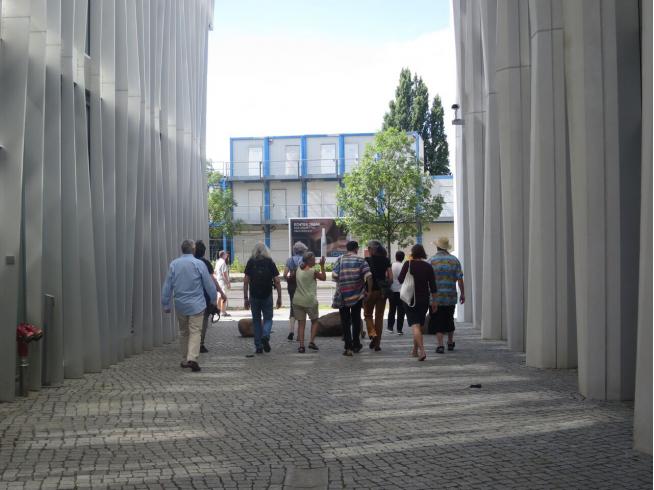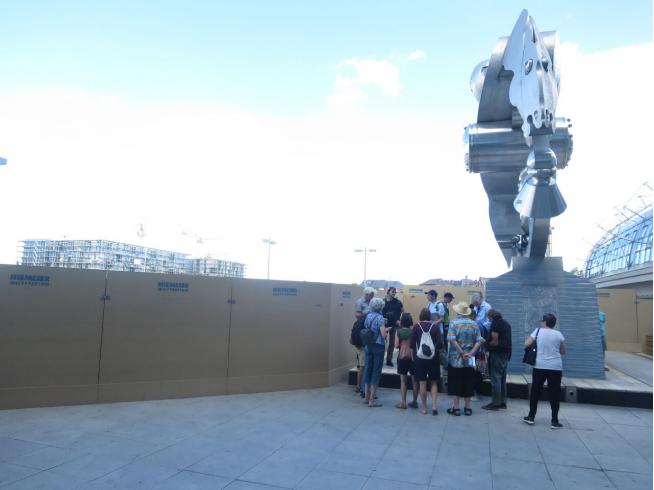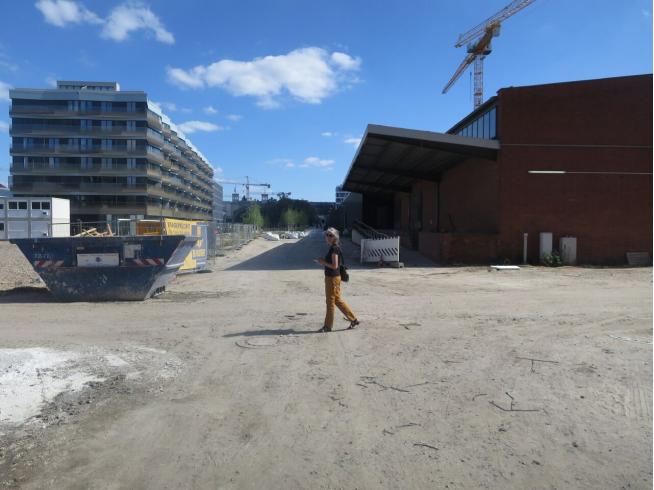Walk to Hear
Walk to Hear
Im Rahmen des Projektes Am Rande der Europacity finden bis Mai 2019 mehrere künstlerische Interventionen in der Europacity statt, die gerade nördlich des Hauptbahnhofs entsteht. Die Veranstaltungsreihe, die sich kritisch mit dem neuen Viertel auseinandersetzt und nach Möglichkeiten fragt, Aktivitäten aus den Rändern - aus den umliegenden Vierteln - in das neue Quartier zu übertragen, wird von Yves Mettler und Alexis Hyman Wolff konzipiert und durchgeführt und hatte seine Premiere im Juli in Form eines Spaziergangs, bei dem der Fokus auf dem Hören lag. Wir veröffentlichen die Zusammenfassung dieses Walks hier ausnahmsweise auf englisch:
First Walk: Between the Existing and the Becoming – sentire (it.) – to hear, to feel
On the 15th of July a group of neighbors, cultural agents, artists and researchers met at the corner of Lehrterstr. and Seydlitzstr. in Berlin-Moabit to take a walk across the invisible borders into the EuropaCity. From the grown-in Lehrter neighborhood, a checkerboard marked by historical developments, from old to new, to hear and feel the borders within the city, to connect spaces, our bodies and minds forming an unprecedented social constellation.
Opening up the senses, the subtle qualities of sound become audible: voices filtered through the trees of the garden colony, trickling of water at a distance and the roar of the central station and Tiergarten Tunnel greeting us and raging relentlessly with the urban concentration of center-city. Along the border we find in-between spaces, be it wasteland or arcadia, fences opening up a panorama of the great construction site; there stretches along the backside a tent city that since three years has been home to European citizens with marginal status, autonomous systems, tenuousness.
Let us come together on the Europaplatz, that triangle of dry grasses and humming bees. It is quite unrecognizable in its current state of unmarkedness, masquerading as a bus station, in the center-of-it-all we cannot stay, inhospitable triangle, all signs usher us along our way.
Since we had planned the walk one week before, two public spaces have been made inaccessible: one being the terrace of the central station, we examine the outdated plans for Europacity and the vestiges of the former Europe Square, where a skyscraper is being constructed that will soon overshadow the station itself.
A stillness sets in as we walk through the desolate Heidestr., a pocket of pumping coming from the Nike crossfit center, thumping, bumping. The construction sites however take their day of rest, we pause and take in the stillness of the cranes towering silently.
These buildings are done, the apartments have been sold and a party is taking place on the balcony. Below we form a circle in the park behind the Hamburger Bahnhof and talk about the changes we have experienced, the systems and structures we know and recognize, because they are permeating, because they are global.
As we crossed the border from the old city to the new parts we could not help but feel the growing narrowness of possibility, the facelessness, computer-generatedness of the facades, the unspecificity of the new landscape, the sterility and lifelessness of this new neighborhood.
Walking through Bruce Nauman’s Double Cage Piece from 1974 as the last station of our parcours, entering and emerging from the narrow gangway, can we experience some physical and spiritual release? What is the power of art in response to that situation we are facing?




